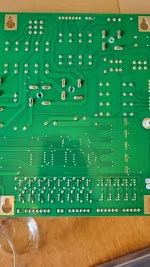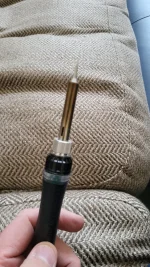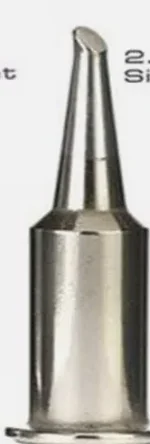Right so i am definitely out of my depth here but trying to explain what I am trying to do... I knew pins were complex when I started out but definitely entering some murky waters here 
I was playing with my friend and chatting idly whilst the left flipper button was pressed and in up right position (it is how you trigger the skillshot)
On the plunge the flipper stopped responding. On lifting the playfield you could see the fuse had gone on left flipper.
I moved the right flipper fuse from the right to the left to see if it was just a bust flipper, and the flipper then triggers but sticks in the up right position. I have therefore determined it isnt the coil thats blown as then the flipper wouldnt lift.
So my diagnosis is that it is the transistor or diode on the board under the backbox and have found in the manual which one that is. I have tracked it down to transistor Q15 & diode D15. I have taken the board out of the backbox and identified the parts on the underside of the board.
I have sourced a replacement transistor, diode and flipper fuse.
Now it so gets to unsoldering the transistor and diode as shown in picture, and putting the new stuff in...
I had a few queries before taking the plunge (or on determining whether I need more specialist help)
1. Does diagnosis seem to hold or am I barking up the wrong tree entirely with this fix? I dont want to start messing with stuff that doesnt need to be messed with, for obvious reasons.
2. If i mess up with the solder how much is a new board?
3. When heating up the existing solder what technique needs to be employed to remove the transistor/diode and ensure that it doesnt just melt and spread? I have attached pic of the iron planning to use?
4. Any other tips for removal of old parts and adding in the new? The transistor looks like it will slot in dead easy but the diode has very long legs
5. What order would you do the fix in to reduce requirement of doing more than is absolutely necessary?
I was playing with my friend and chatting idly whilst the left flipper button was pressed and in up right position (it is how you trigger the skillshot)
On the plunge the flipper stopped responding. On lifting the playfield you could see the fuse had gone on left flipper.
I moved the right flipper fuse from the right to the left to see if it was just a bust flipper, and the flipper then triggers but sticks in the up right position. I have therefore determined it isnt the coil thats blown as then the flipper wouldnt lift.
So my diagnosis is that it is the transistor or diode on the board under the backbox and have found in the manual which one that is. I have tracked it down to transistor Q15 & diode D15. I have taken the board out of the backbox and identified the parts on the underside of the board.
I have sourced a replacement transistor, diode and flipper fuse.
Now it so gets to unsoldering the transistor and diode as shown in picture, and putting the new stuff in...
I had a few queries before taking the plunge (or on determining whether I need more specialist help)
1. Does diagnosis seem to hold or am I barking up the wrong tree entirely with this fix? I dont want to start messing with stuff that doesnt need to be messed with, for obvious reasons.
2. If i mess up with the solder how much is a new board?
3. When heating up the existing solder what technique needs to be employed to remove the transistor/diode and ensure that it doesnt just melt and spread? I have attached pic of the iron planning to use?
4. Any other tips for removal of old parts and adding in the new? The transistor looks like it will slot in dead easy but the diode has very long legs
5. What order would you do the fix in to reduce requirement of doing more than is absolutely necessary?
Attachments
Last edited:



